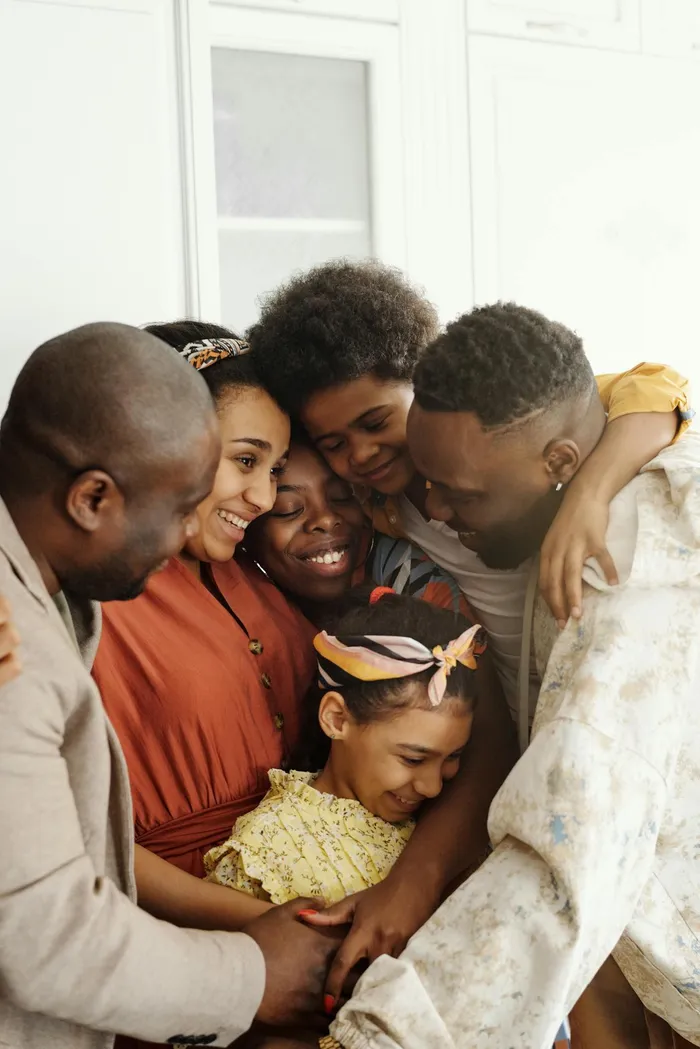Understanding family stress theory: why some families thrive while others struggle

Invest in open communication, ensuring members can express themselves without fear of judgement.
Image: August de Richelieu /Pexels
When a family faces stress, you can often see either their strengths or their struggles.
Some families grow stronger after a crisis, while others may have a harder time coping with the same situation.
Why does this happen? Family stress theory explains how families respond to challenges and why coping differs from home to home.
Family stress theory began in the Great Depression, when sociologists saw how financial hardship changed households.
But it was sociologist Reuben Hill, who formally developed the theory in 1949. His work looked at the impact of World War II on families, particularly how separations and reunions shook family structures.
Hill discovered that families don’t break down or thrive simply because of what happens to them. Instead, three factors interact to shape the outcome:
- The event itself: the crisis or stressor.
- The resources available: financial, emotional, and social supports.
- The family’s perception of the event: whether they see it as manageable, catastrophic or even an opportunity.
This became known as the ABC-X model of family stress. In short:
- A = the stressful event
- B = resources
- C = family perception
- X = the resulting outcome (a crisis or resilience)

Every family operates under a unique set of roles, rules, values, and expectations. When a stressor disrupts this equilibrium, the effects can vary significantly.
Image: August de Richelieu/Pexels
Fast forward to modern life, and the theory is as relevant as ever. Whether it’s a sudden job loss, a child’s illness, a divorce, or even global shocks like Covid-19, family stress plays out daily in millions of homes.
According to research published in the Journal of Marriage and Family, families with stronger support networks and healthier coping strategies are less likely to experience breakdown during crises.
But when resources are limited, think no savings, little access to mental health care, or weak social ties, the same crisis can escalate into long-term conflict, depression or even domestic violence.
What happens inside a family under stress
Every family is a system with roles, rules, values, and expectations. When a stressor enters this system, the ripple effects can be profound. For example:
- In one family, parents may shoulder all caregiving responsibilities.
- In another scenario, older siblings may be expected to care for younger ones while parents work long hours.
These differences shape how stress is absorbed or magnified. Add values like the pressure to attend university or join the family business, and the weight of expectation becomes another layer of stress.
When stress arises, coping skills determine the reaction: a parent might yell and blame, or they might stay calm and problem-solve. The difference is resources.
- Internal resources: self-regulation, conflict resolution, mindfulness, communication.
- External resources: financial stability, food security, medical care, supportive relatives, or access to therapy.
Without these, even small stressors can tip a family into crisis. Two families, one crisis, two outcomes. Take two families facing the same event: job loss.
- Family A has savings, unemployment benefits, and emotional closeness. They see the job loss as a chance to relocate for better opportunities. The crisis strengthens their bond.
- Family B has no savings, no benefits, and a history of unresolved conflict. They view the event as catastrophic. The crisis spirals into arguments, substance abuse, or even separation.
The stressor was the same, but the resources and perception made all the difference. Family therapists, social workers, and counsellors often use family stress theory to understand what’s happening in families.

Every family is a system with roles, rules, values, and expectations. When a stressor enters this system, the ripple effects can be profound.
Image: Alex Green/Pexels
By finding the main sources of stress, like not having enough resources, seeing things in a negative way, or having unhealthy roles, professionals can help families become stronger before problems get worse.
Questions often explored include:
- Did the stress come from inside or outside the family?
- Does it affect one person or everyone?
- Was it sudden or gradual?
- Can it be fixed, or is it a long-term adjustment?
These questions are useful for more than just therapists. Families can use them too. Taking time to ask these questions can help everyone step back and find solutions together. Stress is inevitable, but a crisis doesn’t have to be.
Understanding family stress theory helps us see patterns in our own homes. Building resilience is not about acting like everything is okay. It means making your family stronger, so when stress happens, you can handle it without falling apart. Simple steps to start:
- Invest in open communication: Listen without judgment.
- Strengthen your external network: Friends, extended family, or community groups.
- Build internal resources: Conflict resolution, mindfulness, stress management.
- Seek professional help if patterns feel overwhelming.
And at the heart of it, with the right resources and mindset, stress doesn’t have to define your family’s story. Instead, it can shape a more connected, resilient and hopeful future.